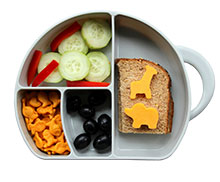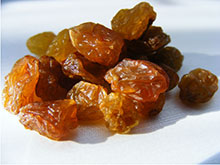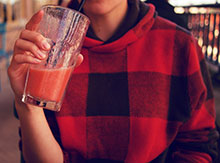The summer holidays are well underway and children will be back to school before you know it. As new uniforms are bought and forgotten summer homework is unearthed, school lunches may be the last thing on your mind. But did you know that the contents of your child’s lunchbox may be worse for them, and their teeth, compared to school dinners?
In the past, school dinners have received notoriously bad press. But following Jamie Oliver’s campaign, in which he famously criticised Turkey Twizzlers, the standard has drastically improved. In fact, government guidelines now state that schools must provide: “high-quality meat, poultry or oily fish; fruit and vegetables; bread, other cereals and potatoes.” They cannot provide: “drinks with added sugar, crisps, chocolate or sweets; more than two portions of deep-fried, battered or breaded food a week.”
Despite the new rules, a lot of parents opt instead to make a packed lunch for their children at home, particularly as many consider it to be a healthier option. But there are actually plenty of hidden sugars that can easily creep in.
To help you out at the start of the coming school year, the team at mydentist wanted to reveal the top four unhealthy foods that we commonly see in school lunchboxes, along with a few gold star alternatives.
 1) Sandwiches
1) Sandwiches
The staple of any packed lunch, sandwiches of all shapes, sizes and fillings have been gracing children’s lunchboxes for years now. But while Public Health England recommends that we base our meals around starchy carbohydrates such as rice, bread, pasta or potatoes, white bread in particular can be damaging to our teeth.
The starches that are found in white flour are formed from simple carbohydrates. These can linger in your mouth, perhaps stuck in between teeth, and break down into simple sugars where bacteria feed and produce acid.
It’s all about opting for healthy alternatives; introduce wholegrain bread and pasta and brown rice to your children, as these are far better for their teeth and general health. Although these can still stick to your teeth, the bacteria doesn’t grow as quickly.

2) Raisins
Another common sight in a lunchbox, many parents may even remember tucking into a packet of raisins at school themselves. A lot of people may think that dried fruit is an easy and healthy snack, when in fact it is quite the opposite. Dried fruits have a high sugar content and tend to be very sticky, which means they can linger in your mouth and in between your teeth for longer than usual. This results in sugar being left on the teeth which bacteria then feeds on, producing acid that causes tooth decay. Fresh fruit is always preferable to dried or processed fruit, as the sugar content is not as accessible or harmful. Try grapes instead of raisins!

3) Smoothies
Just like raisins, smoothies are often thought of as a way of increasing a person’s daily fruit intake. Whilst this may be true, they actually contain a high concentration of sugar which can lead to tooth decay.
It is better to drink a smoothie with a meal rather than sipping throughout the day or between meals, and government recommendations state that 150 ml of smoothie or fruit juice counts as one portion of fruit. However, a less sugary option is to encourage your child to drink water or milk instead.
4) Cereal bars
Cereal bars are a snack commonly marketed as being healthy, perfect for people on the go and a great addition to lunchboxes. Whilst they may contain granola and grains, what actually holds the cereal bars together is sugar in liquid form like glucose syrup or honey. The latter in particular will often be cited as a reason for cereal bars being healthy, but it contains a very high percentage of natural sugars.
Be sure to check the packaging carefully as companies are required to list their ingredients separately, which may make it appear as though they contain less sugar. And although the bars will often contain fruit, this will again be dried which, as we mentioned before, is high in sugars.
We spoke to our very own Barry Cockcroft (non-executive Director and former CDO England), on the matter -he said:
“Providing a wholesome and healthy meal for your child at lunchtime sets them up well for the rest of the day. It also limits unhealthy snacking and means they are far less likely to eat lots when they get home. It is important for children’s general health, as well as their oral health, that they are encouraged to eat a balanced diet at all times - particularly younger children when they are still growing and developing. And school is the perfect place to incorporate good eating habits.
“Parents should also do their best to educate children on why it is important to maintain good oral hygiene. This includes foods to avoid or limit when they aren’t with them, and how to take proper care of their teeth during brushing.”